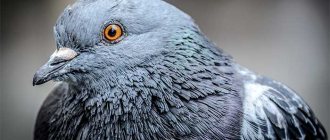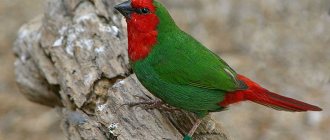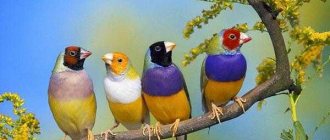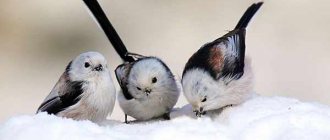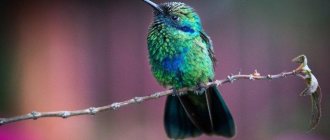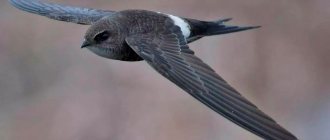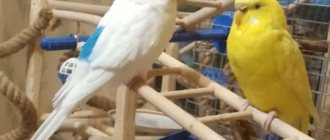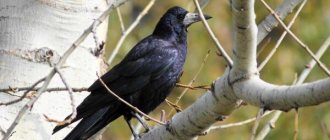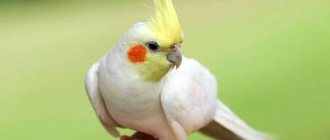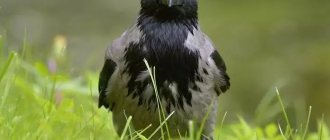The area of Russia is more than 17 million kilometers. The length from west to east is about 10 thousand. From north to south more than 4 thousand kilometers. The country's territory lies in four climatic zones (Arctic, subarctic, temperate with boreal and subboreal landscape types), which are divided into natural zones. This contributes to the diversity of the animal world, a significant part of which is birds. The article presents the main species of sedentary and migratory birds characteristic of each natural zone.
Birds of the Arctic zone
There is only one natural zone - the Arctic desert. Birds play a major role here. The most numerous are:
- tundra partridges;
- snowy owls;
- auks;
- eider;
- seagulls;
- terns;
- skuas;
- cormorants;
- glaucous bird;
- guillemots;
- terns;
- seagulls;
- guillemots;
- dead ends.
In sea birds, nests are located in rock crevices. The inhabitants of the land have more reliable shelters. The names of birds are often associated with the dialects of the local population.
Crows are quite common among ice fields. Not a crow, but rather a raven (a representative of the corvid family). The black companion of people in the white expanses of the Arctic.
In addition to the indigenous inhabitants, there are many varieties of migratory birds:
- white geese;
- brant geese;
- rough-legged buzzards;
- ties;
- dunlins;
- white-tailed sandpipers;
- brown-winged plovers.
These come to fatten up.
Pigeons
These birds have always been considered a symbol of purity , love and fidelity. Let us remember the custom of releasing white doves at a wedding. This symbolic ritual symbolizes a long and happy life and joy for the newlyweds. There are many breeds of this bird, all of them descended from the wild rock pigeon, which today can be found in the countries:
- Europe,
- Asia,
- Africa.
Therefore, the dove is often called the bird of peace. It can even live in high mountain areas , provided that there are places inhabited by humans there.
Where do pigeons spend the night? Where do they build their nests? In the mountains, they can choose crevices in the rock for this; in urban conditions, pigeons fly to roost under the roofs of houses. These birds do not tend to settle on tree branches and most of them do not even know how to sit on branches.
Description of birds of the subarctic zone
In this zone, there is tundra in the northern part, and forest-tundra in the southern part. The climatic conditions here are much milder, so the animal world is more interesting. Birds in the tundra zone are abundantly represented:
- white partridge;
- polar owl;
- numerous varieties of geese and ducks;
- loons;
- seagulls;
- geese;
- peregrine falcon;
- swans.
The forest-tundra is even better suited for birds. In addition to the listed representatives, there are typical inhabitants of taiga forests that arrive in spring and summer to feed:
- capercaillie;
- tundra partridge;
- grouse;
- black grouse;
- several species of plovers;
- representatives of passerines.
There are about 20 species of wintering birds.
Bird reproduction and development
Birds are dioecious. The reproductive organs of a male are 2 testes; in female birds, there is 1 left ovary and an oviduct.
The reproduction and development of birds, as well as that of reptiles, occurs on land.
What features can be noted in the reproduction of birds?
The breeding season of birds begins in the spring with the formation of pairs. Males attract the attention of the opposite sex with spring singing. After a pair is created, the process of bird reproduction or mating occurs.
Mating season of pigeons
The reproduction of birds and reptiles is similar in many ways. Fertilization in these classes of animals is internal, and reproduction occurs with the help of eggs.
A feature of bird reproduction is the formation of eggs covered with a hard shell. After fertilization, the development of the bird embryo begins, a shell of protein is formed around the yolk. In turn, the protein is covered with a subshell shell and a hard calcareous shell. As a result, an egg is formed. Let's get acquainted with the structure of a bird's egg in the figure.
The rapid growth and development of the bird embryo occurs only after the egg is laid and the animals begin incubation.
During the breeding season, many birds begin to build a nest for future chicks. Bird nesting structures can be primitive or can be complex structures. The shape and material used for construction are varied.
The female lays eggs in a nest, which are incubated by both parents in turn. In some species, such as chicken and duck, one female incubates the eggs. The incubation period for eggs can last from 13 days in small birds to 2 months in birds of prey.
According to the type of development, birds are divided into brood and nesting birds.
Breeding birds include cranes, waders, gulls, and swans. According to the type of development, domestic birds - geese, chickens, ducks - also belong to brood birds. Breeding birds include passerines, birds of prey, woodpeckers, and pigeons.
Temperate zone (boreal landscapes)
It contains the country's most extensive natural zone, represented by coniferous forests - the taiga. Area - 15 million square kilometers. Divided into three separate zones:
- northern (divided into northwestern and northeastern);
- average;
- southern
The species composition of birds is similar and large - 260 species. Many non-migratory birds, a large number of songbirds. The main representatives include:
- wood grouse;
- hazel grouse;
- chukars;
- Asian spruce grouse;
- nutcracker;
- nightingale (blue);
- rubythroat nightingale;
- nutcracker;
- bluetail;
- black stork;
- White Swan;
- hoopoe (has a beautiful brown crest);
- nutcracker;
- deaf cuckoo;
- crossbill (distinguished by a beak of a specific shape);
- red-breasted goose;
- stone capercaillie;
- zhelna (black woodpecker);
- great spotted woodpecker;
- green forest warbler;
- bullfinch;
- flycatchers;
- roller;
- Siberian blackbird;
- bluetail;
- jay;
- blackbirds (dusky, white-browed, dark-throated, olive);
- warblers (warbler, wren, thick-billed);
- siskin;
- white-necked zonotrichia.
Of the predators:
- goshawk;
- golden eagle;
- white-tailed eagle;
- great eagle owl;
- Tawny Owl;
- osprey.
In the southern taiga there are many endemic species and marine inhabitants:
- mandarin duck (has a motley color and a protruding breast);
- white-naped crane;
- storks;
- various waterfowl (geese, swans, ducks);
- White seagull.
The role of birds in nature, their importance in human life
Birds are of great importance in nature and human life. In natural conditions, for example, there are complex relationships between birds and plants, on the one hand, and between birds and other animals, on the other.
Birds play a large role in dispersing plant seeds. Certain species of birds (sunbirds, hummingbirds, etc.), feeding on plant nectar or visiting flowers to catch insects in them, promote cross-pollination of flowers.
There are even more complex relationships between birds and other animal species in nature. Some species of birds of prey feed on other species of birds, and by doing this, birds of prey contribute to selection.
In birds, various types of cohabitation are observed, when smaller species of birds settle in colonies of larger ones (starlings settle together with rooks, and rooks together with herons). In these cases, the stronger birds cover the weaker ones. The constant presence of swallows (and sometimes starlings and jackdaws) with grazing herds of domestic and wild mammals is due to the fact that large mammals attract many dipterans, which the birds catch in flight.
Insectivorous birds, as a rule, are beneficial for plants, as they feed on the larvae and caterpillars of various insects, which cause great harm to plants. Passerines eat a particularly large number of insects, bringing enormous benefits to agriculture and forestry. For example, a swallow destroys about 1 million over the summer. insects, and the tit per year - about 6.5 million. eggs of harmful insects.
However, there are birds (bee-eaters, honey bees) that feed on pollinating insects that are beneficial to plants (bees, bumblebees, etc.), break off branches to build nests (rooks), gouge through bark and wood (woodpeckers), and are also natural reservoirs of pathogens person.
Birds are also of great importance in human life, which is expressed in the enormous role of poultry in agriculture and birds in general in exterminating agricultural pests. Birds also have commercial and aesthetic value.
Temperate zone (subboreal landscapes)
It begins with a zone of mixed forests, where typical representatives of the taiga live:
- various species of woodpeckers (greater and lesser spotted);
- kingfisher;
- hazel grouse;
- black grouse;
- goshawk;
- tit;
- wood thrush;
- oriole;
- falcon
In the zone of deciduous forests (the so-called middle zone) there live many birds (predators, songbirds):
- waders (blackling, woodcock);
- pigeons (pigeon, dove);
- Sparrowhawk;
- beetle;
- buzzard;
- spotted eagles;
- kite;
- kestrel;
- tawny owl;
- long-eared owl;
- thrushes (songbird, mistletoe, fieldfare);
- green and crested woodpeckers;
- redstart;
- Robin;
- wryneck;
- goldfinch;
- tits (grenadier, blue tit);
- sparrows (field and house sparrows). These granivorous birds cause problems for grain growers;
- finch;
- martin;
- swift;
- pikas;
- lark (meadow, crested);
- gray heron;
- marsh sandpiper;
- great bittern (water bull or bull - a rare inhabitant of Chuvash reservoirs);
- coot;
- White Crane;
- nuthatch;
- flycatchers (gray, small, pied).
Numerous migrants from taiga and mixed forest zones. The river spaces are abundantly populated by waterfowl. In the European part, the red-headed duck with the brightly colored head plumage of the drakes is interesting; it migrates to the Kuban, but nests on the rivers of Siberia and the Urals.
Typical representatives live in the forest-steppe and steppe zones:
- steppe eagle;
- golden eagle (the largest of the eagles);
- numerous larks;
- bustard;
- gray partridge;
- quail;
- peregrine falcon;
- Falcon Sultan;
- wren;
- stilt;
- gyrfalcons.
Unusual and rare species live in semi-desert and desert zones:
- flamingo;
- pelicans;
- desert Eagle;
- Buzzard (the hawk family, the northernmost branch of the population. Listed in the Red Book. Each chick should be under the supervision of ornithologists);
- vulture
They look unusual. In mountainous areas, there are species characteristic of latitudinal zonality.
Why are birds dying out on Earth and how many of them have we already lost?
What's happening?
In 2011, paleontologist Anthony Barnoski and his colleagues at the University of California, Berkeley, published a paper that described the sixth mass extinction, a process in which three-quarters of species disappear over geological time, which has been ongoing for the past 500 years.
In their study, the scientists compared the average rate of species extinction from the 16th to the 21st centuries with extinction rates in other periods of history. The cause of modern extinction is human activity - people destroy the usual habitat of animals and plants, which leads to a reduction in biodiversity. Plants are likely to be more affected by this process - unlike animals, they cannot move when their habitat is destroyed.
Scientists believe that birds can serve as a good indicator of this process, especially since their numbers are sharply declining. At the end of September, researchers from Cornell University and the American Bird Conservancy estimated that from 1970 to 2022 (that is, over the past 47 years), the number of birds in the United States and Canada has decreased by 3 billion individuals. Thus, the bird population in North America declined by about 30% during this time.
Ornithologists studied data on 529 species of birds (a total of 604 species live on the mainland - Hi-Tech), collected by amateurs and a network of 143 weather radars to monitor the population. In addition, the scientists used studies of breeding birds in North America, which indicated the number of birds at different periods of time.
90% of the birds lost came from just 12 bird families, which include common and widespread species - sparrows, swallows, warblers and finches.
In October 2022, scientists from the Audubon Society, America's leading bird conservation group, released a report indicating that 389 of 604 birds in North America could become extinct due to climate change. In particular, blackbirds, orioles and blue sials are under threat.
The researchers examined 140 million records from more than 70 sources and compared them with data from bird-watching stations. The scientists then used climate modeling created by the UN Intergovernmental Panel on Climate Change to determine which birds might be forced to relocate.
The planet has already warmed by 1°C, and in the future, there is a high probability that the temperature will rise by at least 3°C due to people's lifestyles. Under this scenario, North America could lose 389 bird species (64% of all currently living in the region). But if the world can keep temperature rise to 1.5°C, the number of birds at risk would drop to 241 species, or 40%.
Similar events are happening in Europe - according to BirdLife International, the turtle dove is dying out at a rapid pace in the UK, France and Spain. Representatives of this widespread species of birds of the pigeon family prefer to settle near people - in cities and parks.
According to a study by scientists from the National Museum of Natural History of France, by 2022, the number of birds living near farmland in the country - larks, white-tails, buntings, partridges, meadow pipits and other species - has fallen sharply.
Another study said the bird population in France has declined by an average of a third over the past 15 years. In some areas the situation is close to critical: seven out of ten meadow pipits have disappeared during this period, and eight out of ten partridges have disappeared over the past 23 years.
Of the 39 species commonly found in European farmlands, 24 have gone extinct and only six have increased in number. Among them is the white stork, the study authors note. In the UK, the number of birds living near farmland fell by 56% between 1970 and 2015.
What is the cause of extinction?
There are several reasons for the extinction of birds, but they all boil down to one thing: human activity. On the one hand, there is climate change - rising global temperatures lead to more forest fires, droughts and heavy rains, as well as rising sea levels, which can drown the nests of birds that prefer to build them close to the ground.
These events force birds to emigrate to northern latitudes. On the one hand, not all birds survive migration; on the other, existing ecosystems are destroyed. Predators in areas already affected by climate change have nothing to eat.
Climate change is not the only factor driving bird populations down, but it is exacerbating ongoing problems. Birds are becoming extinct due to active urbanization - they collide with buildings and die under the claws of domestic cats. Studies show that cats kill hundreds of millions of birds a year in the US alone, power lines kill up to 147 million, and glass windows kill up to a billion birds. For comparison, from 10 thousand to 40 thousand birds die annually from the blades of wind power plants in the United States.
Researchers from BirdLife International, an international organization for the protection of birds and their habitats, have found that eight bird species have become extinct over the past ten years due to deforestation in South America. The numbers included Spix's and blue-gray macaws, the black-faced Hawaiian flowerbird, or po'ouli, and the Pernambuco pygmy owl. According to the Red Book of the International Union for Conservation of Nature, more than 26 thousand species are now at risk of extinction.
Birds also die due to agricultural activities - deforestation to increase crop area and the use of pesticides in farming that kill insects. In both cases, human activity deprives birds of their natural habitat, destroying nests in trees and on the ground, and in the second, it also deprives birds of food.
Why are birds important?
Birds pollinate plants, control insect populations, and help forests and other ecosystems thrive and thrive rather than degrade. Therefore, their disappearance could have a number of negative consequences.
The greatest damage the extinction of birds will cause to agriculture is that this event will cause problems with the pollination of flowers and plants, the dispersal of seeds of trees and agricultural crops. Farmers will have to spend more on pesticides - whereas in natural conditions birds effectively regulate insect populations.
In addition, birds provide food for some wild animals, which are also at risk of extinction if birds disappear. After all, birds contribute to the natural beauty of the regions, which attracts tourists who support the local economy.
“Among birds there are many rare species, the number of which amounts to several hundred individuals. And humanity has directly or indirectly participated in reducing their numbers,” said Vladimir Krever, co-founder of WWF Russia. “Gyrfalcons and saker falcons are taken by poachers as birds of prey and sent to Arab countries, Far Eastern storks die en masse on power lines on which they decide to nest, or die during fires in the forests where they live. Siberian cranes may be left without a wintering place - Lake Payang in China, where they spend the winter months, having flown away from Russia, now. The rarest bird species in Russia at the moment is the Spoon-billed Sandpiper, our endemic; you won’t find these anywhere else. It is not yet known exactly why their numbers are declining. Now, just in case, we are funding the creation of a huge protective zone in its habitat.”
In Russia, Altai falcons are at greatest risk of extinction: birds that previously lived quietly on the border of Mongolia with the Altai Territory now often die when colliding with power lines and become victims of poachers. The latter catch them for resale in Saudi Arabia, where falconry is very popular. As a result, their numbers have decreased since 2003 by 27% in the Altai Republic, by 55% in the Republic of Khakassia, and by 20% in the Tyva Republic.
Siberian cranes or Siberian cranes are also under threat of complete extinction. Currently, only 300 pairs of Siberian Cranes nest in Russia, most of which are at the mouth of the Indigirka River. These birds abandon their nests at the sight of people or other predators, leaving the chicks defenseless - this is one of the main reasons for the decline in the population of birds of this species.
The endangered species also include necrophages - the black vulture, the griffon vulture, the vulture and the bearded vulture. In addition, Far Eastern storks and pelicans are endangered.
The sandpiper, which lives in northeastern Russia, is listed as an endangered species in the Red Book. Its numbers fell sharply at the end of the 20th and beginning of the 21st centuries: if in 1970 2.8 thousand birds were recorded, then in 2009 only 120–220 pairs remained. Now the population has partially recovered - according to data for 2022, ornithologists were able to detect 661–718 pairs of Spoon-billed Sandpipers.
What to do?
By stabilizing carbon emissions and keeping warming to 1.5°C above pre-industrial levels, 76% of vulnerable species would be better off and nearly 150 species would no longer be vulnerable to extinction from climate change. To preserve the bird population, it is important to keep cats indoors and not let them outside, as well as to increase the volume of forest planting.
Urban factor
Many representatives of birds have found their place in cities and small towns. And they don’t tend to fly away in winter:
- seagulls;
- sparrows;
- tits;
- starlings (thunderstorm of orchards);
- rooks;
- pigeons
Along with wild specimens, there are also domestic representatives of the bird kingdom, from laying hens to domestic ducks of various breeds. Poultry (canaries, larks) that sing every morning, creating a positive mood.
Birds need human attention because they bring great benefits by destroying harmful insects and rodents, dispersing plant seeds and pollinating flowers. Therefore, it is customary to build artificial nests and feeders.
The cultural heritage is associated with fairy-tale characters: the hamayun bird and the alkonost. The hero Ivan Tsarevich, in search of his bride Marya, turns to them for help.
The birds of Russia are beautiful in their amazing diversity!
External and internal structure of birds
We have already studied many interesting representatives of the animal kingdom. Not all of them are found in nature. Animals often avoid meeting people and are nocturnal.
Birds meet us everywhere. Many we don’t even notice. The world of birds is huge and diverse. Let's take a trip and get to know our feathered friends better.
Why did these animals get such a strange name? The origin of the word “bird” comes from the Latin language. Translated pàuts means “egg”, or literally “hatched from an egg”. Another name for this class is birds. The entire body of birds is covered with feathers, hence the second name.
Currently, there are approximately 9 thousand species of birds. Adaptations for flight are manifested in the external and internal structure of the bird’s body.
Let us dwell on the external structure of birds.
- The body structure of birds is divided into several sections. Let's take a closer look at the picture.
- On the head there is a long and thin beak covered with a horny sheath. It consists of two parts: the mandible and the mandible. There is also a pair of nostrils here. On the sides there are eyes and ear openings.
- On the head there is a long and thin beak covered with a horny sheath. It consists of two parts: the mandible and the mandible. There is also a pair of nostrils here. On the sides there are eyes and ear openings.
- The skin of birds is delicate, thin and poor in glands. Of the skin glands, only the coccygeal gland is present, which is well developed in waterfowl.
These animals are characterized by feather cover - this feature of the external structure of birds distinguishes them from other classes of vertebrates. Feathers are divided into two groups: contour and feather. The first of them are large, elastic and necessary for protecting the body and flight. The second ones are small, soft and lie under the contour feathers. They allow the bird to retain body heat. The structure of a bird's feather is shown in the figure.
At certain periods of a bird's life, a change of feathers, or molting, occurs. During this period, old, frayed contour feathers fall out and are replaced by growing new ones. Molting occurs in different birds at different rates of intensity. For example, birds of the order Galina molt faster.
Chicken moulting
Let's move on to the features of the internal structure of birds.
In the general structure of the skeleton of birds, similar features can be identified with reptiles. The same sections are observed in the skeleton: skull, spine, skeleton of the limbs. The forelimb of birds is a wing, and therefore the structure differs from the five-fingered limb of other vertebrates. The structural features of the internal skeleton of birds are presented in the figure.
- In birds, the body cavity is divided into thoracic and abdominal by a connective tissue septum - the diaphragm.
- The structure of the digestive organs of birds has significant features that depend on the type of nutrition and adaptations for flight. Let's take a closer look at the picture.
- The difference between the circulatory system of birds and reptiles is that in birds arterial blood does not mix anywhere with venous blood. The structure of the heart of birds has 4 chambers, and it is large in size.
Arterial blood is saturated with oxygen, so metabolism occurs intensively. All this leads to an increase in body temperature, and therefore birds are warm-blooded.
- A complex respiratory system allows birds to breathe in flight. Gas exchange in a flying bird occurs both during inhalation and exhalation. This type of breathing is called double breathing.
- The nervous system of birds is similar to amphibians and reptiles. However, there are some peculiarities in the structure of the brain.
The brain is short, wide, and round in shape. The forebrain is much larger than that of reptiles. This is due to the complex behavior of birds. Birds are able to fly and make complex and varied movements. For this reason, the cerebellum reaches significant sizes.
- The olfactory organs are underdeveloped. At the same time, birds have excellent vision. The eyes are large with three eyelids: upper, lower and transparent inner - nictitating membrane.
Birds have very good hearing. These animals are able to hear faint sounds that warn them of danger.
Subclass Ratites
The subclass Pleaeognathae includes birds that evolved during the Cenozoic era, after the dinosaurs became extinct. It includes a number of extinct species, as well as 5 living orders, including:
Order Cassowaries (Cassowaries and Emu)
Emus
Cassowaries and emus from the order Casuariiformes are large, flightless birds with long necks and legs. They have long feathers that resemble coarse fur, but the head and neck are almost hairless.
There are four extant species of cassowaries:
- Helmeted cassowary (Casuarius casuarius);
- Orange-necked cassowary (C. unappendiculatus);
- Muruk Cassowary (C. bennetti);
- Emu (Dromaius novaehollandiae).
Order Kiwiformes (Kiwi)
Experts don't agree on the exact number of species that belong to the order Apterygiformes, but there are at least three: the southern kiwi, the great gray kiwi and the little gray kiwi. According to the latest data, scientists have identified two more species: the northern brown kiwi and Apteryx rowi.
Birds from this order are endemic to New Zealand. Kiwis are flightless birds with tiny, almost vestigial wings. They are strictly nocturnal birds, digging out larvae and earthworms at night using their long, narrow beaks.
New Zealand's national bird, the kiwi, is vulnerable to predatory mammals, including cats and dogs, that were introduced to these islands hundreds of years ago by European settlers.
Order Rheaformes (Nandu)
There are only two rhea species in the order Rheiformes, both of which are found in the deserts, grasslands and steppes of South America. These flightless birds have long feathers and three toes on each foot; they also have claws on each wing, which are used during defense.
Rheas are similar to ostriches in appearance, however, the extent of their relationship remains controversial among scientists. The body size of rheas is almost half the size of ostriches.
Order Ostriformes (Ostriches)
The only surviving representative of the ostrich order (Struthioniformes) is the African ostrich (Struthio camelus), which is considered a real record holder. Not only is it the tallest and heaviest living bird, but the ostrich can also reach speeds of up to 70 km/h, and can also run long distances at speeds of up to 50 km/h. Ostriches have the largest eyes of any land vertebrate, and their eggs, weighing up to 2 kg, are the largest of any living bird.
Ostriches live in Africa and thrive in a wide range of habitats, including deserts, semi-arid plains, savannas and open woodlands. During the five-month breeding season, these flightless birds form flocks of 5 to 50 individuals, often mixing with grazing mammals such as zebras and antelope. When the breeding season ends, the flocks break up into small groups of two to five birds that care for the newborn chicks.
Order Tinamooformes (Tinamu)
Tinamous are land birds native to Central and South America. The order Tinamiformes contains about 50 species. Tinamou are well camouflaged with patterned plumage that ranges from light to dark brown or gray and helps the birds avoid predators such as humans, skunks, foxes and armadillos. These birds are not very good flyers, as molecular analysis shows they are closely related to flightless birds such as emus, moas and ostriches. (In fact, Tinamiformes are one of the oldest orders of birds, and the earliest fossils of its representatives date back to the late Paleocene era.)
Digestive system
The food eaten goes from the pharynx to the esophagus, from there to the stomach and then to the intestines. Since representatives do not have teeth, the stomach is used to grind food, which the birds fill with small pebbles, and then its powerful muscular walls grind the food.
The bird's intestines are very short so as not to create excess weight, and since the rectum is poorly developed, feces do not accumulate in the body and are quickly eliminated.
A well-known feature of avian digestion is its high speed. In some species, complete digestion of food takes a matter of minutes.
Excretory system
The excretory organs of birds are similar to those of reptiles. Their kidneys are very large due to increased metabolism.
A ureter emerges from each kidney and opens into the middle section of the cloaca. The adrenal glands are located near the upper edge of the kidneys. There is no bladder, as in the case of the rectum, this allows urine not to linger in the body and lightens the weight.
Swift - the bird of Russian cities
Everyone knows the swift, as it can be found in almost every city park in Russia. The population of swifts comes right behind pigeons and sparrows, and are considered one of the most common birds in Russian cities.
Haircut
The swift differs from other birds in that it practically does not walk and cannot swim, it can only fly. Also, if a swift falls into tall grass, it becomes easy prey for a predator, since it cannot quickly rise into the sky due to the grass, which does not allow its wings to flap.
Some swifts are sedentary birds, and some are migratory. At the same time, sedentary birds live further south, and migratory birds fly towards northern cities in the summer. Swifts feed on insects that they catch in flight. Also, while hovering, the bird can fall asleep for a while, since it spends most of the day in flight.
Swifts nest in holes, hollows and other openings they find. Then, once a season, they lay a clutch, which is incubated by the female and insured by the male. While the eggs are hatching, the female and male take turns feeding, and this is how they spend the next 17-27 days. After the chicks hatch, they are fed in the nest for up to 40 days, and later they are taught to fly and catch insects. It is also worth noting that swifts are not only long-lived, but also mate for many years, often for life.
Swift
Redstart - a bird of Russian cities
In the shady parks of Russia you can meet one of the most popular birds in Russian cities - the redstart. Her singing enchants and soothes, giving comfort and peace to walking.
The redstart is an unprepossessing bird, with a light belly and a dark back, with a gray, almost black head and a fabulously beautiful voice. When it flies, its brownish-reddish tail resembles the rattling of a flame. The bird flies to Russia with the first signs of warming and flies south in September.
Common redstart
Upon arrival in the spring, the bird nests in any shallow crevices, in abandoned hollows, so that the nest is not visible from the outside. Next, the female and male lay eggs, and the female incubates the future chicks for 15 days. After which the chicks are fed for another 15 days and only after that they fly into adulthood. For the first week after departure, the female and male fly with the chicks and teach them how to feed, escape from danger, etc., after which the birds become independent adults.
The bird feeds on beetles, mosquitoes, flies and other living creatures, and is exclusively a predator. At the same time, she herself becomes prey for a hawk, falcon, stray cats, etc.
Redstart species
Basic characteristics of birds
These animals have several distinctive features. During the process of evolution, their forelimbs turned into wings, thanks to which almost all species are adapted for flight.
Their skin is dry, without sweat glands, and completely covered with feathers, which play an important role in flight. Another characteristic feature is their beak, which replaces jaws.
